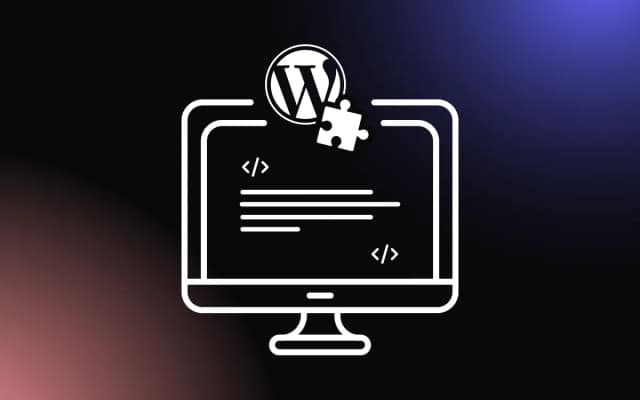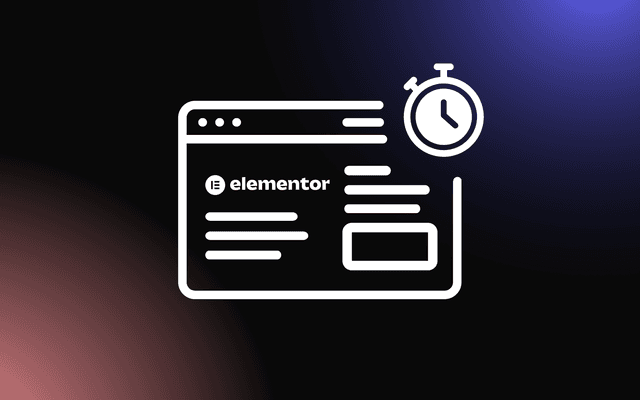
For years, managing digital content and web development has been shaped by Content Management Systems (CMS) like WordPress, Joomla, or Drupal. These trusty companions provide a one-stop shop for storing, managing, and publishing content online.
They beautifully mesh the front-end (the part of the website your users see and interact with) and the back-end (the behind-the-curtain part where content is stored and managed).
But as handy as these traditional CMS platforms have been, they can sometimes feel a bit confining, especially now when our world is brimming with numerous platforms and devices all wanting a piece of your content pie. Enter the headless CMS, ready to revolutionize how we handle content.
Picture a headless CMS as a content storage hub, or a back-end-only CMS, crafted to make content available via a RESTful API for display on any device. The term "headless" springs from the idea of lopping off the "head" (the front-end or website) from the "body" (the back-end or content storage).
In this piece, we're going to take a deep dive into the sea change sparked by the emergence of the headless CMS. We'll dig into the pros, cons, and best-use scenarios for a headless CMS, giving you insights to help you figure out if it's the best match for your content needs.
We'll also highlight some of the leading headless CMS platforms on the market and guide you in picking the right one for your unique needs. By the end of this journey, you'll be well-equipped with a robust understanding of the headless CMS and why it's making waves in the content management world.
What is a Traditional CMS?

Traditional Content Management Systems, or CMS for short, have been the sturdy workhorses behind the scenes of website creation and maintenance for quite some time now. Familiar faces in this space include the likes of WordPress, Drupal, and Joomla — tools that act like digital helpers, allowing you to mold, manage and tweak your website's content without a PhD in computer science.
In the nitty-gritty of it, these usual CMS platforms consist of two main cogs in their machinery. First up, there's the Content Management Application (CMA), which is pretty much like your digital drafting table — it's where you create and manage your content. Then, you've got the Content Delivery Application (CDA). Picture it as the unsung hero in the wings, making sure your crafted content is neatly stored and ready to be showcased on the front-end of your website when called upon.
One notable trait of a traditional CMS is that it's an all-in-one package. The front-end (the face of your website that visitors interact with) and the back-end (where the magic of content creation happens) are tightly knit together. It's handy for a smooth-sailing content management and publishing experience but can feel a bit limiting when your content needs to make appearances across a range of platforms and devices.
Limitations of Traditional CMS
As with most things in life, traditional CMS aren't perfect, and their limitations become more apparent as we delve into the rapidly evolving, multi-channel digital landscape of today.
The primary hiccup with these platforms lies in their "inseparable twins" nature. The front-end and back-end of your website are intertwined, which is peachy for managing straightforward websites, but throw in a need for multi-channel publishing and things start to get dicey. Given our world of smartphones, smart TVs, and an array of IoT devices, it's essential that your content can strut its stuff on every stage possible. This is a performance that a traditional CMS might find tough to pull off.
Also, remember the rigidity of your school's old playground rules? That's what it can feel like with traditional CMSs when it comes to technological flexibility. They often lay down the law, requiring your tech whizzes to abide by the pre-determined front-end technology. This can curb their creative impulses and make it challenging to catch the wave of new tech trends.
In addition, traditional CMS platforms can sometimes act like an overzealous salesperson, packing in a ton of features and functionalities that you don't necessarily need. This could end up complicating your system and slowing down your site's performance - a nuisance for small businesses or individuals who are just looking for a more streamlined solution.
Lastly, as your content begins to grow, akin to a small plant maturing into a tree, your traditional CMS might struggle to support its weight. This could dampen your site's performance and turn the user's smooth ride into a bumpy journey.
What is a Headless CMS?

Picture this. You've got a box full of Lego bricks, and instead of following a set of instructions, you're free to create anything your heart desires. That's the essence of a headless CMS. The term "headless" might sound a little gruesome, but all it means is that you're separating the face of your content (the front-end) from its building blocks (the back-end).
In a headless CMS, your content is like unshaped clay, ready to be molded into any form you want and not just confined to a single shape like a webpage. It's stored as raw, unformed data, waiting to be sculpted and showcased anywhere you need it - whether that's on a website, an app, or any other device, thanks to the magic of APIs.
This unrestricted approach comes with some pretty awesome advantages. Firstly, it means your tech team can choose their favorite tools to design the front end, giving them the freedom to innovate. Secondly, because your content is just raw data, you can seamlessly weave it across different platforms and channels, making your message consistent everywhere it appears.
However, every silver lining has a cloud. A headless CMS may sound like the perfect solution for businesses wanting to share their content far and wide with a flexible approach. But it's worth noting that it requires a sturdy technical know-how to set up and maintain, particularly when it comes to designing and managing the presentation layer. It's like being handed the keys to a powerful sports car — thrilling, but only if you know how to handle it!
Benefits of Headless CMS
Headless CMS’s prime selling point is absolute flexibility. It hands over the creative control to developers to craft unique experiences for your users using their preferred code and design tools.
Plus, it's the definition of versatility. It makes your content ready for any platform — from websites and apps to smartwatches and digital billboards — ensuring a seamless user experience throughout.
Better yet, it grows with you. By separating content management from its presentation, it can handle growing traffic and content without a hitch. That means happy users and SEO.
The cherry on top? It's future-proof and friendly with other systems. Its API-first design makes integrating with other platforms, like e-commerce or CRMs, a breeze. So it's not just a handy tool, it's a versatile teammate for your digital future!
Headless CMS: A Paradigm Shift in Content Management
How Headless CMS Changes Content Management
Welcome to the brave new world of headless CMS! This fresh take on content management is shaking things up and how.
Imagine being able to separate the creative and technical aspects of your website, giving both sides more freedom. That's the charm of headless CMS. It cuts the strings between the front and back ends, giving creatives and developers room to work their magic independently. Faster workflows? Check!
Forget about creating content with a single purpose. With headless CMS, your content becomes versatile data, ready to be published and republished anywhere. Hello, efficiency and consistency across all platforms!
Next up, integration has never been easier thanks to an API-first architecture. It's like a universal translator, making your CMS play nice with e-commerce platforms, CRMs, and even machine learning algorithms.
Worried about the future? Headless CMS has got you covered. It's built to easily adapt to new technologies, so it's ever-ready for whatever comes next. And when it comes to scaling, it's a smooth sail. Your business growth won't give your CMS a meltdown.
Choosing a Headless CMS

As the headless CMS continues to gain traction, the market has become saturated with options, making the decision-making process a challenging one.
Here are some tips and considerations to help you select the right headless CMS for your business.
- Identify Your Needs: Before diving into the sea of options, it's crucial to identify your specific needs. Are you aiming for multi-platform publishing? Do you require integration with specific systems or technologies? Do you plan on scaling your content extensively in the future? Having clear answers to these questions will help guide your choice.
- API Capabilities: Since a headless CMS relies heavily on APIs to deliver content, examine the API capabilities of your potential choices. Ensure that they support modern, widely-adopted standards like REST or GraphQL and that they provide adequate documentation and support for developers.
- Scalability: As your content grows, your CMS should be able to cope. Look for options that have proven scalability and can handle an increase in content volume and user traffic without impacting performance.
- Security: Digital content is a valuable asset, and its security should be a top priority. Investigate how the CMS handles security — data encryption, user authentication, access controls, etc., and make sure it complies with relevant security standards.
- User-Friendly Interface: While developers will appreciate the flexibility and API access of a headless CMS, non-technical team members should also be comfortable using it. Look for systems that offer a user-friendly content editing and management interface.
- Customizability: Every business is unique, and your CMS should be able to accommodate your uniqueness. The ability to customize content models, workflows, and user roles is a significant advantage.
- Support and Community: Consider the support provided by the CMS vendor and the vibrancy of the user community. Active community forums, ample documentation, and responsive customer support can be lifesavers when you encounter challenges.
- Pricing: Last but not least, consider the cost. Headless CMS platforms can range from open-source options that are free to use (but may require more setup and maintenance) to premium platforms with comprehensive features and support. Balance your budget against your needs to make an informed decision.
The Future of Content Management with Headless CMS

Peering into the digital crystal ball, we can see that headless CMS is set to shine even brighter in the future. Let's get a snapshot of what's around the corner.
As we step into tomorrow, one thing's for sure: omnichannel publishing is picking up steam. With more gadgets and platforms than ever before, a headless CMS's superpower of zipping content across any endpoint becomes all the more valuable.
We also see our CMS buddy getting chummy with trendy tech like machine learning and artificial intelligence. The goal? Crafting uniquely personal content experiences for every user.
But not all roads lead to a purely headless approach. A rising star on the CMS horizon is the 'decoupled' solution. This CMS hybrid gives you the flexibility of headless, while still keeping some user-friendly elements from traditional CMS. It's like having your cake and eating it too!
So, all signs point to a thrilling journey ahead with headless CMS. As it grows and adapts, it's ready to revolutionize the way we handle and deliver content in our hyper-digital age.
Conclusion
A headless CMS isn't just another tech buzzword – it's a real game changer in how we manage and deliver content. It's versatile, efficient, and geared up to grow with you. Ready to pump out content across all sorts of platforms, connect seamlessly with other systems, and stay on its toes for whatever the future of tech has in store – it's seriously well-suited for the fast-paced digital world.
Choosing a CMS isn't an off-the-rack decision, it needs to fit your business just right. But a headless CMS is definitely worth a good, long look. As we dive deeper into this multi-channel digital era, businesses with a headless CMS in their toolkit could really steal a march – delivering top-notch content consistently across all platforms, and staying a step ahead in the digital dance.


